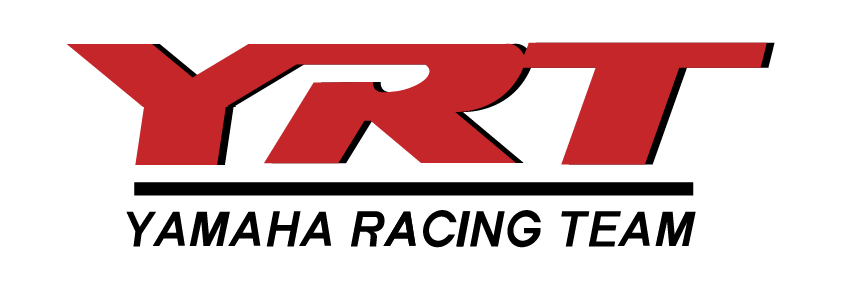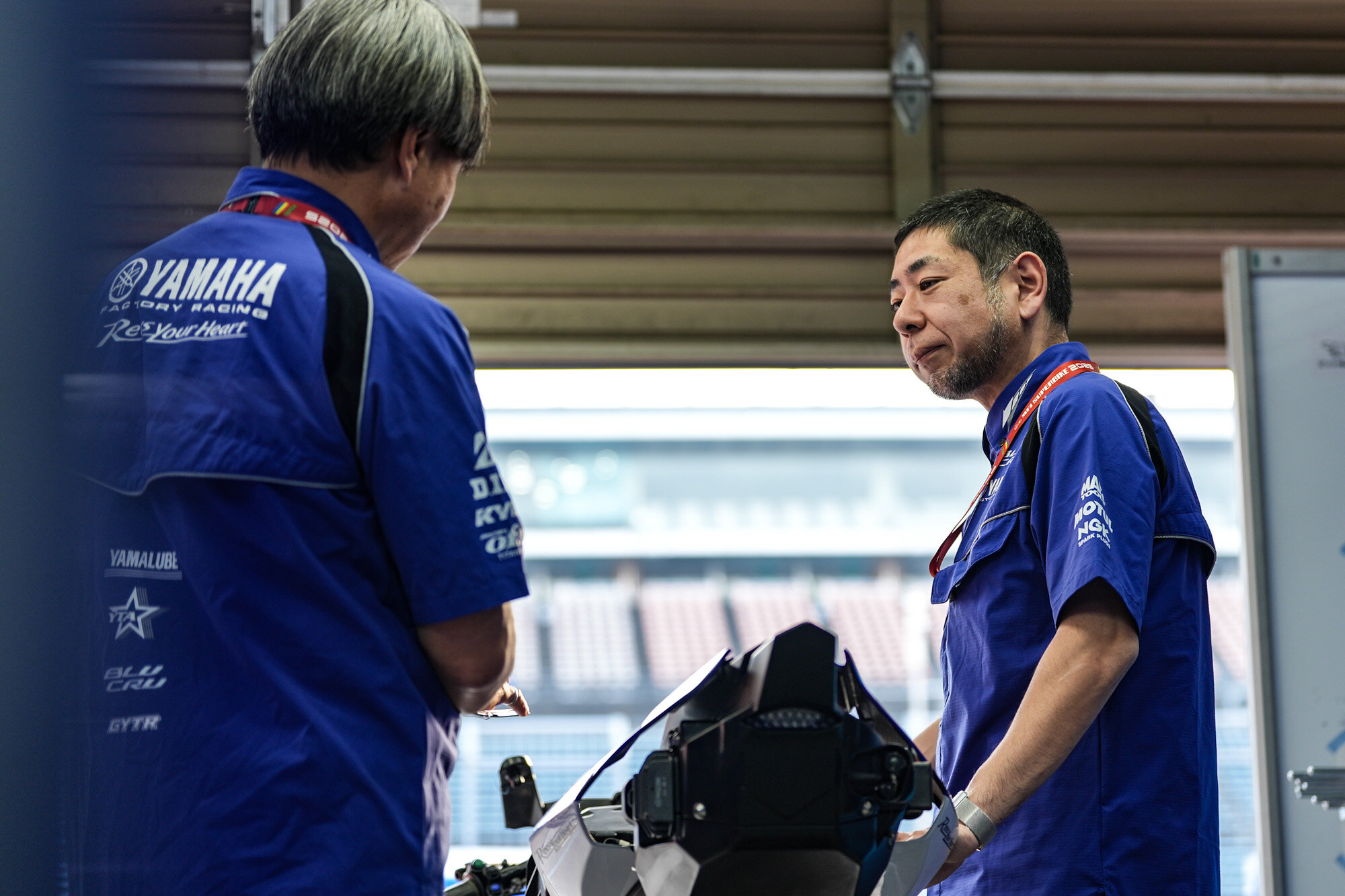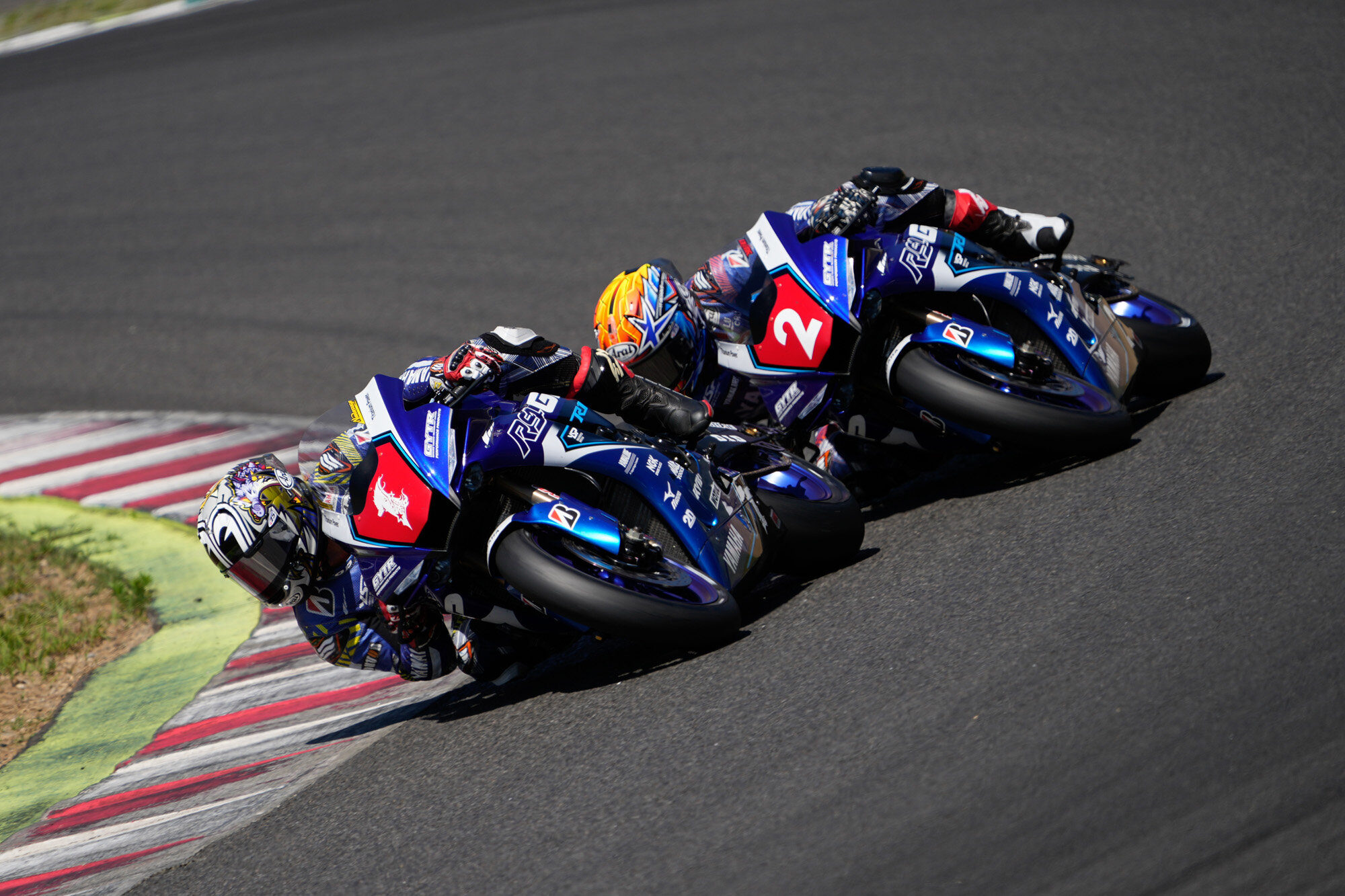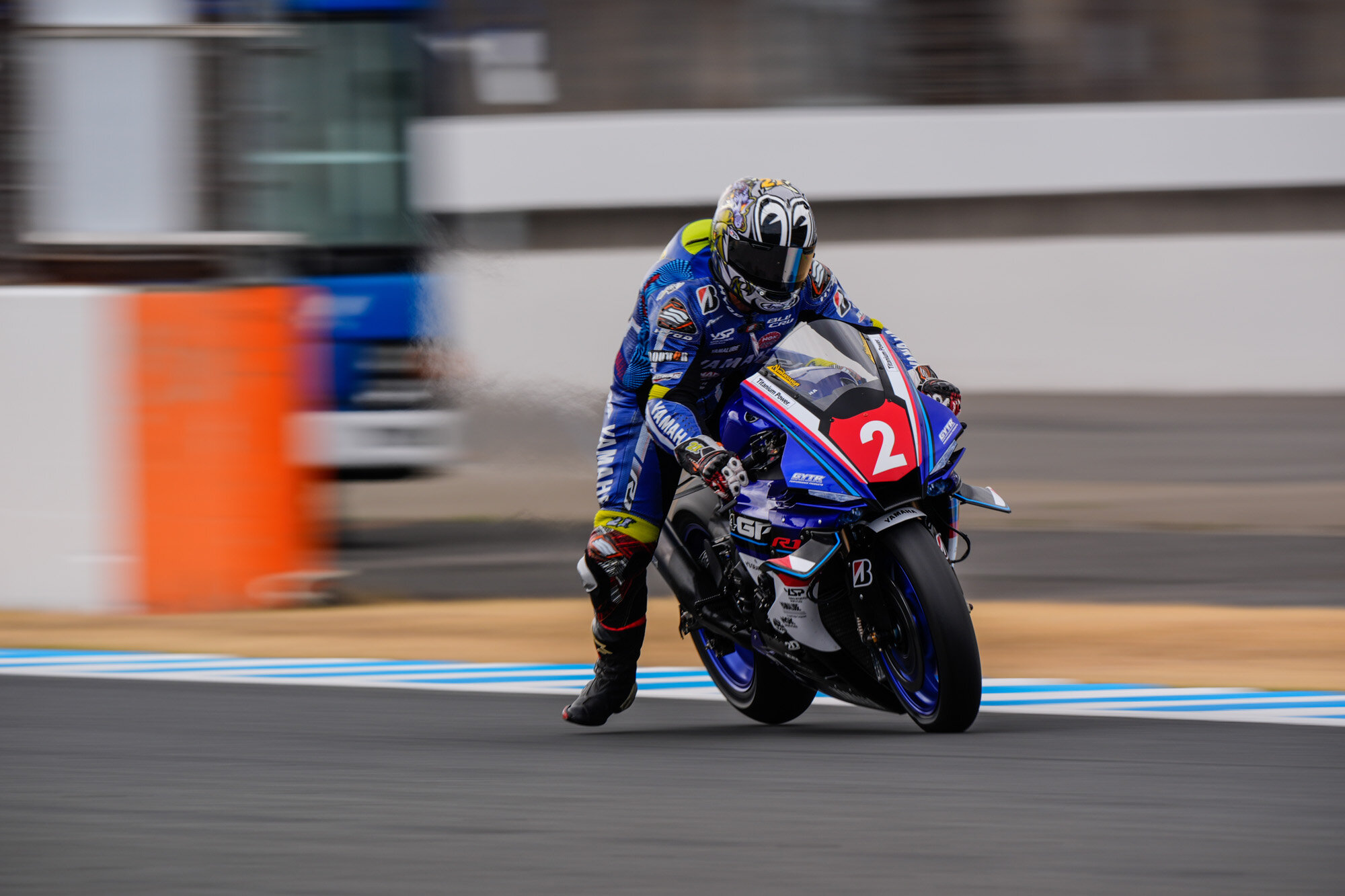R1 RACE Project Leader Interview Vol.1
On the weekend of April 19-20, 2025, the new winglet-equipped YZF-R1 made its debut in Japan's pinnacle road racing series of JSB1000. It was a chance to confirm the potential of the base bike to be used for Yamaha's Suzuka 8 Hours entry.
In the race, Yamaha Factory Racing Team rider Katsuyuki Nakasuga took 2nd place, but more than his finishing position, the event was the perfect opportunity to check whether the bike's settings, including the new winglets, needed to be revised.
In this interview we spoke with Itaru Fukushima, project leader of development for the R1 RACE model for JSB and the 8 Hours. He covered how the R1 has been developed since 2019, about the new winglets, how the preparations for the 8 Hours are proceeding, and what goals are in place for the big event.
Six Years Spent Refining Together with Champions
"The factory YZF-R1 hasn't competed in the Suzuka 8 Hours since 2019, but since then we've continued to develop it through JSB1000. Our development goal has remained the same, which is to raise the base level of performance, and that includes acceleration, deceleration and cornering. Our goal is to improve lap times as much as we can," said Itaru Fukushima, project leader of development for the R1 RACE model for All-Japan and the Suzuka 8 Hours.
"When Yuki Okamoto joined the team in 2022, it gave us a chance to look at his data, and through that we saw how he and Nakasuga have very different riding styles. Okamoto brakes late and stops the bike hard, then changes direction in a short distance before opening the throttle quickly and widely. Nakasuga on the other hand doesn't slow down as much on the brakes, but keeps a high speed all the way through the corner.
"With Nakasuga's riding style, we saw that he tended to open the throttle wide on corner exit, which resulted in more spins. He's known for his eagerness to learn, so he's been busy trying to understand the differences between his and Okamoto's riding styles. He wants to gain the strengths of both. That's why he began to demand different characteristics from the bike, and I remember that this became visible from the start of 2024."
"Nakasuga has come closer to Okamoto's riding style, reducing loss from tire spin. To suit that, we made changes like optimizing electronics, adjusting the R1's dimensions, and adjusting the rigidity of some parts, all to bring out the R1's power even more. This is how the R1's acceleration has evolved.
"On the opposite side from acceleration is deceleration, and it isn't just about stopping. It's also about the rider's feel when braking, especially how planted the bike feels. We designed the engine braking to 'pull' the rear, so it feels like the rear is being pressed into the ground, to reduce load on the front while allowing the bike to bend. We've developed brakes that make it easier for the rider to control the entire bike, including the electronics, suspension, swingarm, and the engine."
As Fukushima-san's words indicate, there is no magic part that improves lap times all by itself. Rather, the R1's evolution is thanks to the development team's tireless refining of its base level of performance.
In fact, for six years starting in 2019, JSB1000 title-winning riders Nakasuga, Nozane, and Okamoto have all been involved in the R1's development. "The buildup and sum of their work is not small, as the total potential of the package has risen a lot," says Fukushima. The fact that both Nakasuga and Okamoto have set new circuit records at Motegi and SUGO in 2024 proves that the R1 is continuing on an upward trajectory of improvement.




